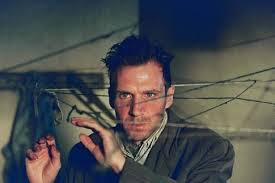A new semester of Gothic is upon us! As the season of pumpkins and Halloween begins and we all come back from summer holidays, the University of Sheffield Gothic Reading Group has prepared a new year's worth of cake AND death! This semester's theme? Religious Gothic!
Note: All meetings will take place from 4-6 pm unless otherwise specified. Film screenings will take place in Seminar Room 4 (14) in Jessop West. All other meetings will take place in Jessop West Meeting Room HUB 2.
On October 7th we will be screening the film "Black Narcissus," the 1947 psychological drama adapted from the Rumer Godden novel of the same name. Set in a missionary convent in the Himalayan Mountains, the film charts the fall of a group nuns and explores notions of sensuality, instability, jealousy and seclusion. So, all our favourite things to kick off the year!Note: All meetings will take place from 4-6 pm unless otherwise specified. Film screenings will take place in Seminar Room 4 (14) in Jessop West. All other meetings will take place in Jessop West Meeting Room HUB 2.
We'll follow up on October 21st with selected passages from Matthew Lewis's "The Monk," perhaps one of the most infamous Gothic novel of all time. Whilst the novel is rife with topics for discussion, in keeping with our overarching theme for this semester, we’ll be discussing the way in which Lewis depicts Catholicism and his presentation of monasteries, convents and their inhabitants.
It’s a truth universally acknowledged that there’s nothing Sheffield Gothic loves more than Ann Radcliffe (except a cake with Ann Radcliffe’s face on it. We had one of those, it was glorious.) So, on November 4th we'll be reading a selection of passages from her 1797 novel "The Italian, or the Confessional of the Black Penitents." The session will discuss the novel in relation to Lewis’s
The Monk" and Radcliffe’s reaction to it, as well its religious themes and representations.
On the 10th of November we'll take a break from our semester theme for a joint session with The Sheffield Animals Research Colloquium (ShARCS). We'll be reading up on a selection of texts on Gothic animals, with a special emphasis on sea-monsters. Details to be announced, stay tuned for more information!
 |
| We're not suggesting you come to Gothic Reading Group dressed as a mad monk... OR ARE WE??? |
Our novel for this term- or at least the one that we’re reading in full- is James Hogg’s 1824 masterpiece (if we do say so ourselves) of Scottish Gothic, "The Private Memoirs and Confessions of a Justified Sinner." Quoting from that well known and reputable source Wikipedia, the novel ‘infers a pseudo-Christian world of angels, devils, and demonic possession.’ It’s been a favourite of ours for some time, and we’ll be delving into Calvinism and the Gothic double, among other topics. We'll be discussing it (with cake) on November 18th.
What’s a term focused on Gothic and religion without a little cult action? We'll round of the term on December 2nd with a screening of the cult film (in every sense of the word) "The Wicker Man." Although we all have a fondness for Nicholas Cage in a bear suit screaming about bees, it will be the 1973 original film starring the late, great Christopher Lee.
We cordially invite you to join us for fun and frivolity, madness and mayhem, as we march forward to almost certain doom with another year of Gothic studies and Gothic joy. Anyone interesting in writing a guest blog on any of the above texts or anything you love (or love to hate) about the Gothic, please contact us at gothicreadinggroup@gmail.com.
And do stop by for GRG meeting... we'd love to have you...for dinner...!! Bwhahahahaha...(cough) sorry...
Sure, when Christopher Lee does it it's a classic movie moment... but when we kidnap strangers and perform ritual human sacrifice suddenly we're a "dangerous cult" and "ruining Christmas."
The Sheffield Gothic Reading Group is open to all. Follow us on Twitter at @SheffieldGothic
The Sheffield Gothic Reading Group is open to all. Follow us on Twitter at @SheffieldGothic










